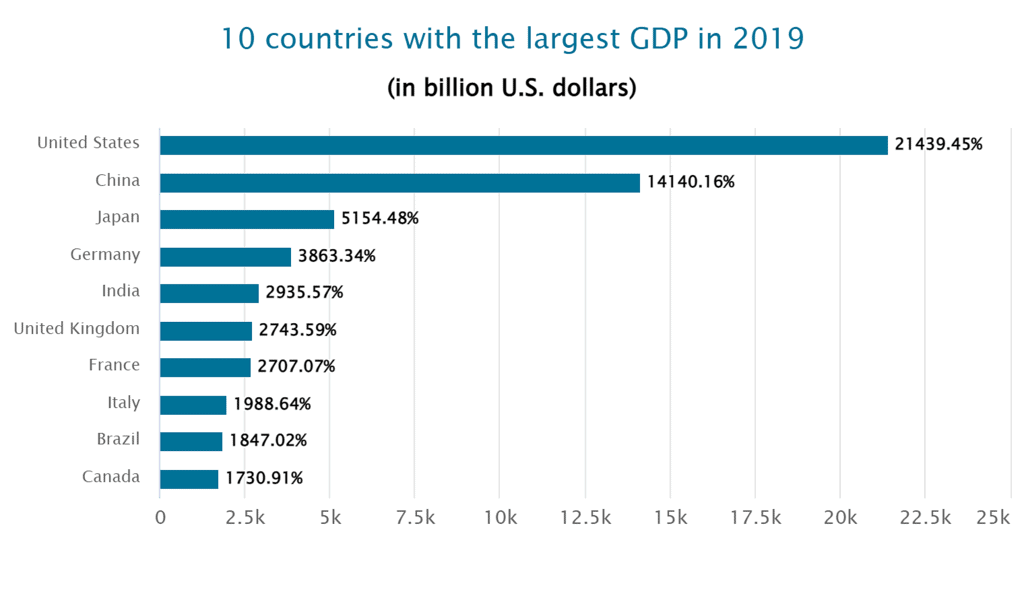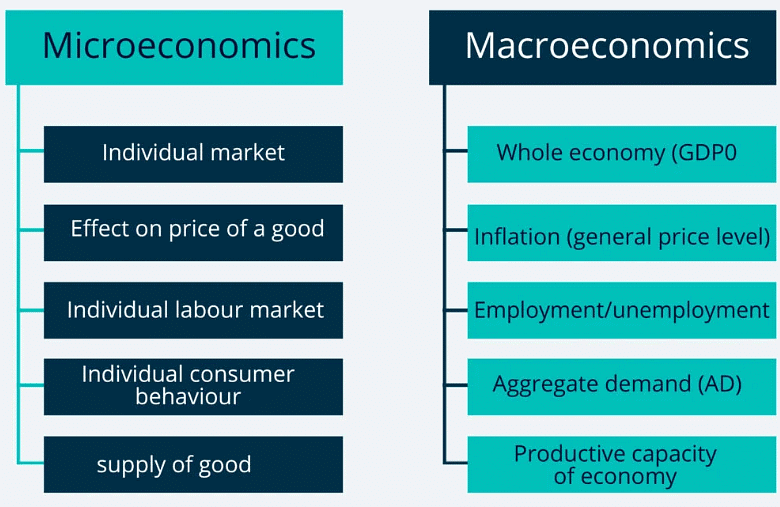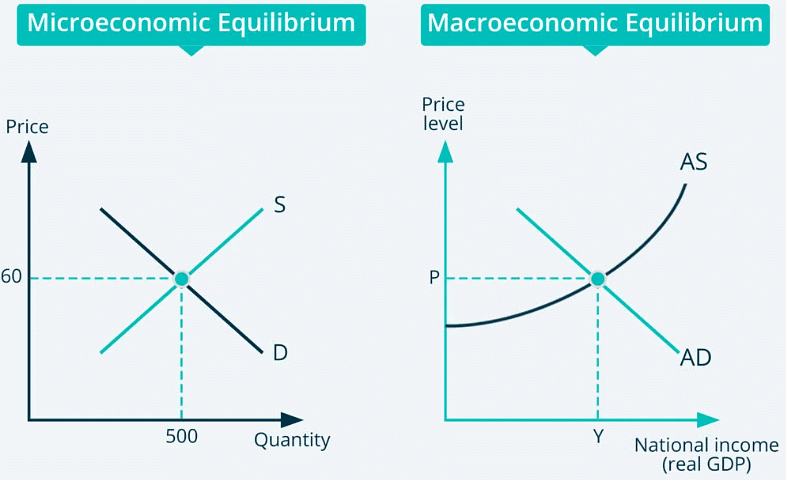Microeconomics and Macroeconomics | Economics for Grade 12 PDF Download
The micro and macro divisions of economics used to be nonexistent before the Great Depression. Prior to the economic downturn of the 1920s, economics was focused on the study of production, distribution, and consumption of goods and services in society (Rodrigo, 2020).
The general idea of economics strongly focused on how supply and demand interact in individual markets. It also sheds light on how even in a time of financial crisis, the market would return to an equilibrium where the price would adjust based on the supply and demand behavior (Rodrigo, 2020). When the Great Depression took place, however, this belief was dismantled. and John Maynard Keynes established macroeconomics as a core economic principle. Thus began the divide between microeconomics and macroeconomics.
The differences between macro and microeconomics, however, continue to fuel an ongoing discord among professionals and even students. And in this article, you will learn about what macroeconomics is, microeconomics definition, as well as explore the differences between macroeconomics and microeconomics and how they contradict and complement each other.
Microeconomics and Macroeconomics Defined
After publishing The General Theory of Employment, Interest and Money, John Maynard Keynes founded and paved the way for macroeconomics. Keynes’ work brought forth the bigger picture of the economy beyond individual labor markets and consumer behavior. With economists recognizing Keynes’ approach, the study of the behavior and structure of the entire economy called macroeconomics emerged, alongside the classical paradigm of microeconomics.
In order to understand the differences and the relationship between the two core disciplines of economics, it is important to know what microeconomics and macroeconomics are first.
What is microeconomics?
Microeconomics is a formal study of the behavior of individual markets and their participants, such as buyer, seller, and business career professionals (“Microeconomics,” 2019). According to Kreps (2020), microeconomics consists of four categories, namely the actors, behavior, institutions, and equilibrium. The “actor” refers to either the consumers or firms; meanwhile, “behavior” concerns the choices actors make. “Institutions” or the “institutional framework” is all about the general nature of options of the actors or individuals, as well as the outcomes of their actions (Kreps, 2020, p. 3-5). Lastly, equilibrium is the state of balance in an economy; it is when the price equates demand and supply in a particular market (Economics Online, 2020).
In response to the question of what is microeconomics, it is the study of the tendencies or what is likely to happen when individuals or actors make choices and how these choices affect the supply and demand for resources, which then affect pricing.
What is macroeconomics?
Unlike microeconomics which concerns the individual markets, macroeconomics focuses on the overall state of the economy. Macroeconomics studies phenomena that affect the whole economy, including gross domestic product or GDP, as well as how the economy is affected by changes in unemployment, national income, and price levels. Instead of looking into individual markets, consumer behavior, and price of goods, macroeconomics studies inflation, employment/unemployment, aggregate demand, etc.
The Differences between Microeconomics and Macroeconomics
The focus of microeconomics and macroeconomics revolves around the allocation of scarce resources. Both disciplines study the supply and demand interaction of resources in order to determine the best way to allocate these resources to consumers (Lumen, n.d). They, however, have key differences that fuel the microeconomics vs. macroeconomics debate, some of which are the following:
Individual Markets vs Whole Economy
As its name suggests, microeconomics focuses on the smaller segments of the economy—the individual markets. The study of microeconomics analyzes the behavior of individual markets in order to make decisions on the distribution of limited resources. Macroeconomics, on the other hand, is generally concerned about national or global economics. Instead of focusing on individual markets, macroeconomics studies the sum total of economic activity, which includes handling countrywide and global issues, such as growth, inflation, and unemployment.
Equilibrium vs Disequilibrium
- Microeconomics stands on the principle that markets soon create equilibrium, or the state when the supply of goods equals the demand. The supply and demand dynamics determines the price of goods in the market. If demand increases faster than the supply, the response of firms will be to raise the prices of goods. In such an event, it is assumed that supply will also increase and the market restores equilibrium (“Supply and Demand,” n.d.).
- Before the Great Depression, it was assumed that the macroeconomy also behaved in the same manner as the microeconomy. Disequilibrium is created when markets experience imbalances, which result in surpluses and shortages. If a surplus exists, sellers are driven to lower their prices to eliminate the surplus in supply. When there is a shortage, the price would go above the equilibrium, thus creating an imbalance (Khan Academy, n.d.).
- The state of economic disequilibrium became apparent during the 1930s when the Great Depression resulted in a high unemployment rate and low economic output (Economics Online, 2020). From a classical microeconomics perspective, disequilibrium is not supposed to occur. It was not until Keynes’ The General Theory of Employment, Interest and Money that a profound shift in economic thought took place and gave macroeconomics a significant spot in economic theory (Economics Online, 2020).

The Relationship between Microeconomics and Macroeconomics
- Despite their differences, microeconomics and macroeconomics are far from being totally distinct subjects. These two core disciplines provide complementary perspectives on the overall state of the economy.
- Macroeconomic events play a vital role in the decisions made by firms on the microeconomic scale. Although microeconomics focuses on the individual markets, it considers how macroeconomic forces impact individual industries and firms (Lumen, n.d.). An example of this is how firms would consider business expansion and hiring more workers based on the overall health of the economy. Meanwhile, the performance of the macroeconomy is dependent on the decisions made on the microeconomic level by businesses and individual households (OpenStax, 2016).
- Like in advanced finance degree studies, the relationship between microeconomics and macroeconomics is also highlighted. This is clearly shown in the flow of income from personal (micro) to national (macro) level. As illustrated in the circular flow model below, you will see how money flows through an economy among individual households, businesses, and other firms and institutions.

Bridging the Microeconomics and Macroeconomics Gap
- The divide between micro and macroeconomics has been a major point of contention, and what many economists have been attempting to bridge. There are those who believe that macroeconomics is standing on a shaky foundation that can be solidified by contemporary microeconomic elements, especially since most of the economic analysis is microeconomic in nature.
- Macroeconomics, on the other hand, is dealing with its own conflict—the battle between the classical and contemporary schools of thought when it comes to analyzing and explaining economic aggregates’ behavior (Rodrigo, 2020). These major theories in macroeconomics include the Keynesian theory, which claims that the aggregate demand (the total amount of demand for goods and services produced in an economy) will not always meet the supply produced. And then there is the neoclassical theory’s concept of marginalism, which describes how economic participants’ decisions are based on marginal utility—something that the classical Keynesian theory does not cover (Lumen, n.d.).
- Micro and macroeconomics have diverging areas of focus but they are not separate subjects due to the fact that they offer complementary perspectives of what economics is (Principles of Economics Vol. 1 & 2, p. 15). But while the differences between micro and macroeconomics continue to fuel an ongoing debate, the reality, however, is microeconomics affects macroeconomics and vice versa and both play significant roles in helping us understand how to make the economy work for the well-being of society.
- If you are an economics professional who wants to broaden your knowledge and advance your education, you may also want to check our guide on the best online master’s degrees in economics.
|
23 videos|22 docs|1 tests
|




















